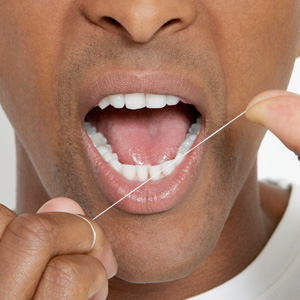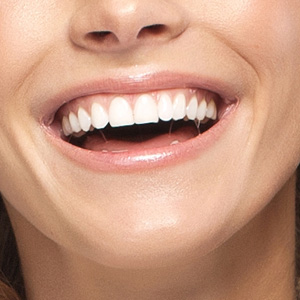Bone Grafting
At Coastal Periodontics, we understand that bone loss in the jaw—whether from injury, periodontal disease, tooth loss, or trauma—can jeopardize both the health and appearance of your smile. Our bone grafting procedures restore the strength, structure, and function of your jaw so you can maintain or regain a confident, healthy bite.
What Is Bone Grafting & Why It Matters
Bone grafting is a surgical treatment that rebuilds or augments lost jawbone. It’s often essential when:
- You’ve had a tooth extracted, and the bone has begun to resorb
- Periodontal (gum) disease has destroyed bone surrounding natural teeth
- Trauma or injury has damaged your jaw or tooth socket
- You’re considering dental implants, bridges, or dentures and need sufficient bone to support them
Without adequate bone, implants may not integrate properly, adjacent teeth can shift, and facial structure may degrade. Bone grafting helps preserve jawbone, support dental implants, and maintain your facial aesthetics.
Types of Bone Grafting Procedures
Depending on your specific need, we provide several grafting techniques in our Portsmouth, NH periodontal clinic:
- Socket grafting (immediately after tooth extraction) to prevent bone loss
- Ridge augmentation to rebuild bone where teeth have been missing for some time
- Sinus lift (sinus augmentation) for upper jaw bone support when sinuses are close
- Guided bone regeneration (GBR) using barrier membranes to encourage bone growth
- Block grafts using bone harvested from your own body (autograft) or donor sources
We use modern materials—autograft, allograft (donor bone), xenograft, or synthetic grafts—depending on your condition and goals.
The Bone Grafting Process at Coastal Periodontics
- Initial consultation and imaging: We’ll assess bone volume via x-rays or 3D CBCT scans to plan precisely.
- Treatment planning: We’ll discuss graft type, materials, timeline, and whether the graft will coincide with implant placement or be a separate stage.
- Procedure: Under local anesthesia (and sedation if desired), we insert the graft material, often with a membrane or mesh to protect it, and suture the area. Post-op care begins immediately.
- Healing & integration: The graft heals over weeks to months as new bone forms. Regular check-ups ensure proper integration.
- Final restoration: Once sufficient bone has regenerated, we move forward with dental implants, dentures, or other prosthetic options if needed.
What to Expect During Recovery
- Mild swelling, bruising, or discomfort for several days—manageable with prescribed or over-the-counter pain meds
- Avoiding certain foods (soft diet) and refraining from strenuous activity during initial healing
- Good oral hygiene without disturbing the graft site; avoiding smoking helps significantly
- Follow-up visits to evaluate healing progress usually at one week, then periodically until graft integration is enough for restoration
Healing time varies: a simple graft might integrate in 3–4 months, while larger grafts (or sinus lifts) can take 6+ months.
Benefits of Bone Grafting for Dental Health
- Provides stable bone for dental implants, ensuring long-term success
- Preserves the natural structure of the jaw, preventing sunken cheeks or smile collapse
- Helps maintain alignment of the remaining teeth
- Supports gum health and prevents periodontal issues
- Improves ability to chew, speak, and smile confidently
Frequently Asked Questions (FAQs)
- Is bone grafting painful?
Most patients feel minimal pain thanks to local anesthesia and sedation options. Any discomfort typically subsides within a few days. - Am I a good candidate for bone grafting?
You are if you have lost jawbone due to tooth loss, gum disease, injury, or trauma—and if your overall health permits surgery. We’ll review your medical history to ensure safety. - How long until I can get a dental implant after grafting?
Often 3-6 months, depending on the graft type, size, location (upper vs. lower jaw), and individual healing capacity. - Is the graft material safe?
Yes. Materials like autograft, allograft, xenograft, and trusted synthetic grafts are biocompatible and widely used in implant dentistry.
Expert Bone Grafting in Portsmouth, NH
Coastal Periodontics offers advanced bone grafting services designed to restore both form and function in your jaw. Whether you are preparing for dental implants, trying to reverse bone loss, or hoping to preserve the integrity of your smile, our experienced team uses up-to-date techniques and compassionate care.
Contact our Portsmouth, NH office today to schedule a consultation. Let’s explore how bone grafting can rebuild your bone, support your oral health, and prepare you for successful, lasting dental restorations.
Veteran & Woman-Owned Practice
At Coastal Periodontics, we are proud to be both a Veteran and Woman-Owned periodontal practice. This foundation reflects our commitment to excellence, service, and leadership in patient care. Our values are shaped by a strong sense of discipline, integrity, and compassion—qualities that guide every patient interaction. When you choose us, you're supporting a practice built on dedication to both country and community.








